Home > Company > Tire Safety > Maintaining Tires > Tire Rotation
Even if your car is properly aligned, tires still need to be rotated for optimal wear performance and maintenance. Rotation counteracts the uneven wear characteristics of each wheel position on the vehicle. How often should you do it? To maximize tire tread life, follow the recommended rotation schedule in your vehicle owners manual. If there is not a recommendation from the vehicle manufacturer, then rotate your tires every 5,000 to 7,000 miles by taking your car to a trusted tire dealer or automotive service center.
If your car's wheels are out of alignment, your tires will wear unevenly, which can lead to early tire replacement. Also, a car out of alignment could signal other mechanical problems that may affect tire performance. For the best results, choose a shop that uses accurate computer-assisted machines, and ask for a printout of the adjustment angles to keep with your service records.
Tires and wheels that are out of balance don't just cause annoying vibration. Uneven tread wear may also result, further reducing your ride comfort and leading to earlier tire replacement. A shop with an electronic spin balancer can help smooth things out.
Front-wheel drive vehicles place braking, steering and driving forces on the front axle tires. Rear axle tires receive primarily braking forces, resulting in a much faster wear rate for the front axle tires.
The "Modified Cross Pattern" can be performed on any front- or rear-wheel drive vehicle equipped with four non-directional tires (directional tires must be rotated front to rear only). Free rolling axle tires are crossed and installed to the drive axle, while the drive axle tires are brought straight to the free rolling axle (without crossing). Just remember, “cross to drive”.
Free rolling axle tires are crossed and installed to the drive axle, while the drive axle tires are brought straight to the free rolling axle (without crossing). Just remember, “cross to drive”.
Directional treads are designed to perform in the direction denoted on the tire sidewall only. They must always be rotated front to rear — no matter the vehicle they are installed on — so the direction of the rotation does not change.
Watch our Tread Life video to see more rotation patterns.
Notes:
Following rotation, adjust all tires to the vehicle manufacturer’s recommended inflation pressures. Always torque lug nuts or lug bolts to manufacturer’s recommended specification.
Vehicles equipped with permanent four-wheel drive and those with "on command" four-wheel drive and driven mainly in four-wheel drive mode are best suited to a four-tire cross rotation. With this pattern, tires from both axles are crossed and installed on the opposing axle.
Straight rotation was developed in the early years of radial tires. This rotation method switches the tires front-to-rear but does not cross side to side. This rotation method is used for directional tread patterns.
If your spare tire is a matching full size tire (as opposed to a temporary spare) and you want to keep it in rotation, move the spare to the right rear position. Then place the tire that would have gone to the right rear in the spare position.
If your vehicle has dual rear wheels the rotation pattern looks like two triangles, one on the driver’s side and one on the passenger’s side. For each side, move the outer dual tire to the inner position, the inner dual tire to the steer position and the steer tire to the outer dual position.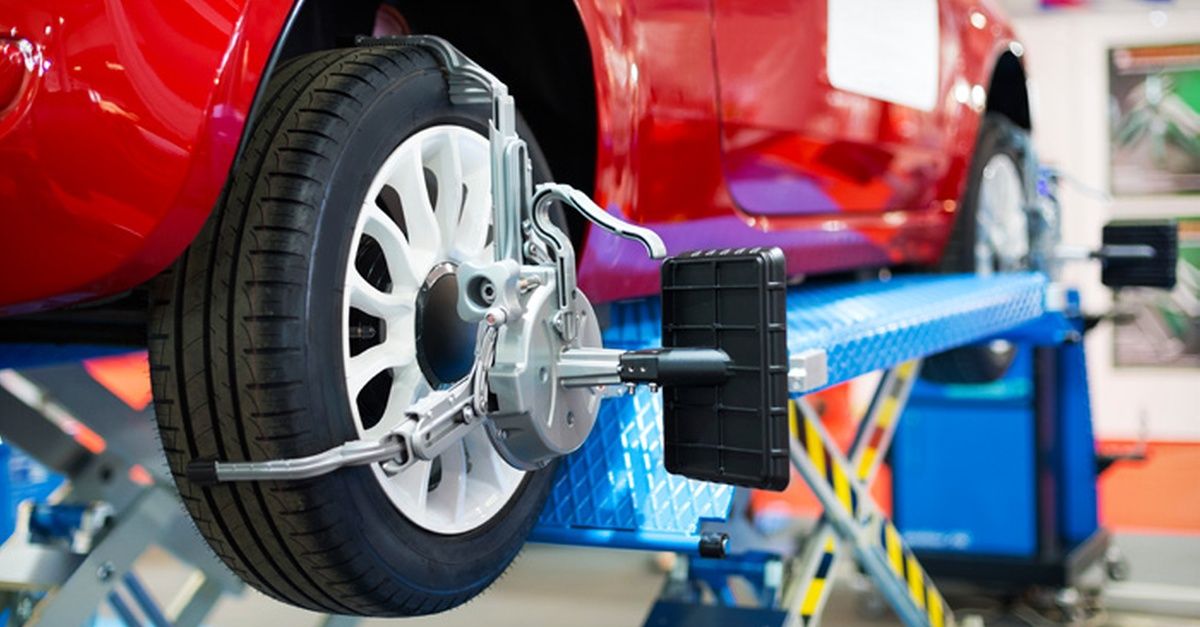
Never include a temporary spare tire in the rotation.
Directional tread patterns must be rotated front-to-rear only so the direction of the rotation does not change.
Learn about our mission, our achievements, and our ongoing commitments
Read Our Origin Story
Let’s be real for a second here: is rotating your tires really all that important to your car’s maintenance? It’s such a simple task, and all four tires are always on the ground anyway, plus you tend to turn both left and right about the same number of times, so what good does it really do?
Well, yes, it is important for a variety of reasons. Rotating your tires
more periodically can help you save money on maintenance costs, ensure
your car continues to drive smoother, and even help you stay safer on
the road.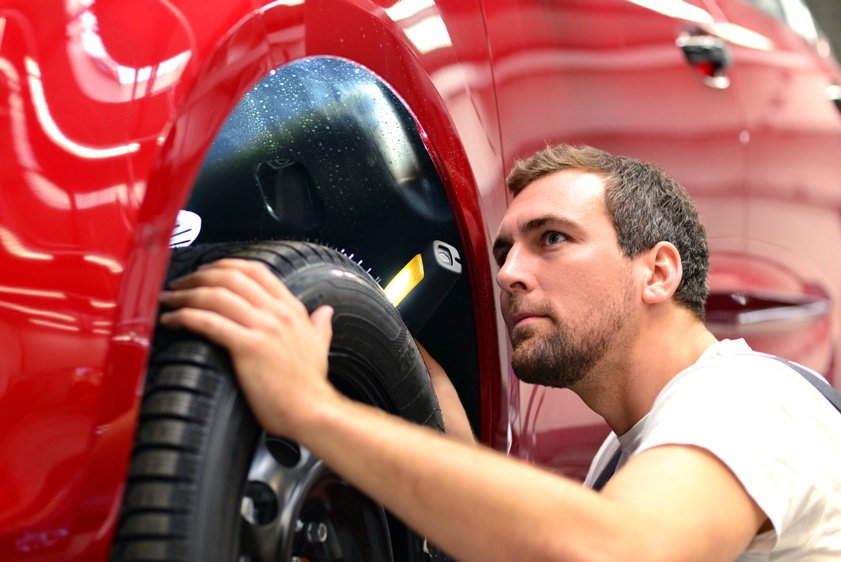 On this blog, the car repair and maintenance experts from Christian
Brothers Automotive will show you how.
On this blog, the car repair and maintenance experts from Christian
Brothers Automotive will show you how.
Even though your tires are all in contact with the road constantly, they wear at immensely different rates. Failing to rotate them means you will wear them out unevenly, resulting in premature changes and higher operating costs. To be more precise, your front tires wear far faster than your rear ones do.
Your front tires are the ones responsible for turning your car, which means
they’re going to shoulder a much greater load. Your outside front
tire tends to travel the furthest in any given corner. Over time, as you
turn both directions thousands of times, these tires tend to accumulate
the miles far faster than the rear tires. Front wheel drive cars feel
this effect far more, as they also have to support the weight of the engine.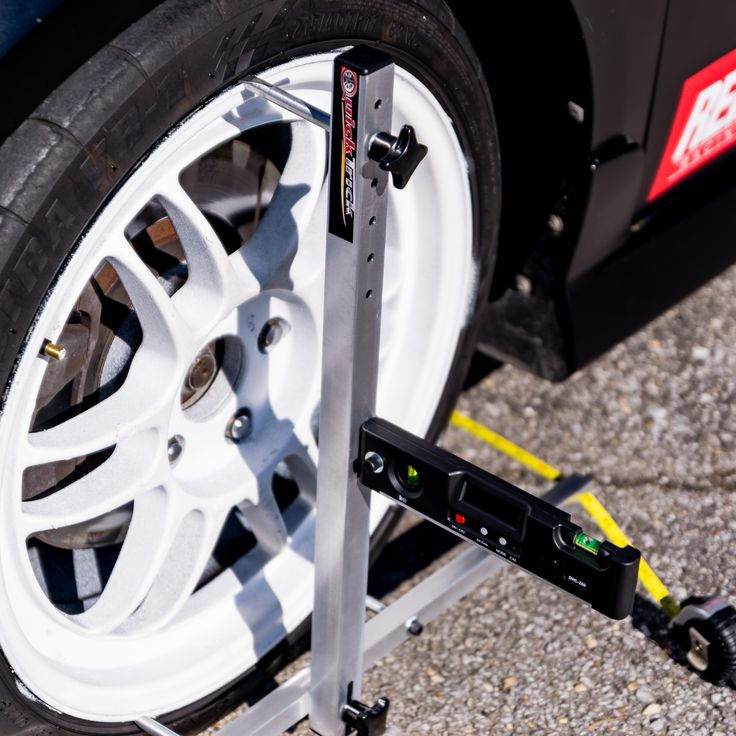
Likewise, if your alignment is out, causing your tires to not sit perfectly flat on the ground, your tires will not wear evenly along the maximum surface area. This is when you see large stripes on tires that have worn far faster than the rest of the tread. It’s normal for the inside edges of tires to wear faster than the outside, but if the disparity is particularly extreme, you may have an alignment issue, and not rotating your tires only exacerbates the issue.
When your tires wear out too quickly, you’ll have to replace them
before the others. You may have completely worn out or bald front tires,
but your rears may have plenty of tread life left on them. This leads
to unmatched tires, which can jeopardize handling on your vehicle and
harms the resale value. It also leads to tires which are not as safe as
those which are properly rotated. Balder tires have a tougher time sticking
to the road, especially during wet weather, which means even the smallest
amount of rain could cause you to completely lose control.
As a general rule of thumb, it’s a good idea to rotate your tires every 5,000 miles or so. If you drive a car that uses conventional oil, this is roughly every other oil change. Likewise, it depends on your driving style and your car as well. If you tend to drive a lot of highway miles, then rotating every other oil change is probably fine. However, if your driving is mostly in-town and has a lot of start-and-stop to it, then the braking and accelerating, frequent turning, and traffic will all have a much greater impact on your tires and you’ll want to rotate more frequently.
There are several ways to tell if your vehicle needs tire alignment. These signs include:
Drivers will usually notice uneven tire wear before anything else.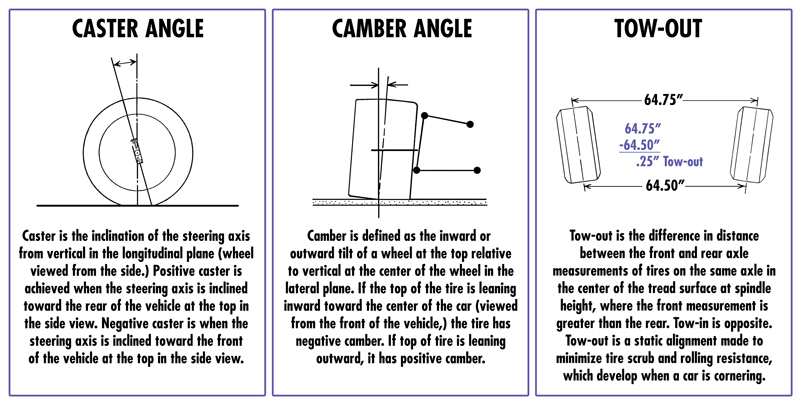 When
any tire shows more wear and tear than the others, you should schedule
a tire rotation. Since the front tires bare most of the engine weight,
need to direct the car through turns and handle more braking, it’s
completely normal for them to wear out faster. Yet another major indicator
for tire rotation is increased vibration and noise as you drive. Vibrations
will probably be noticeable throughout the vehicle, but they’ll
be the strongest in the steering wheel. When tread is worn very unevenly,
you may even notice the vehicle shaking or swaying. Usually swaying happens
at lower speeds while shaking is apparent at higher speeds
When
any tire shows more wear and tear than the others, you should schedule
a tire rotation. Since the front tires bare most of the engine weight,
need to direct the car through turns and handle more braking, it’s
completely normal for them to wear out faster. Yet another major indicator
for tire rotation is increased vibration and noise as you drive. Vibrations
will probably be noticeable throughout the vehicle, but they’ll
be the strongest in the steering wheel. When tread is worn very unevenly,
you may even notice the vehicle shaking or swaying. Usually swaying happens
at lower speeds while shaking is apparent at higher speeds
Christian Brothers Automotive has been changing the way you think about
car care for over three decades. Our local auto repair shops have helped
thousands of customers get the honest service their vehicle needs at prices
that won’t break the bank. We believe in being there for our customers
and doing the right thing, and that means offering you honest opinions
and a customer service experience that simply isn’t matched anywhere else.
We believe in being there for our customers
and doing the right thing, and that means offering you honest opinions
and a customer service experience that simply isn’t matched anywhere else.
Schedule a maintenance service by calling Christian Brothers Automotive at today!
* Editor's note: This blog was originally published in March 2017 and has been updated and improved as of January 2019 for comprehensiveness and reader experience.
Many people read about rearranging tires along the axles in old textbooks for drivers. But in modern operation, off-season tire changes are almost never found. Why rotate wheels today and when?
Swapping tires and changing them between axles is designed to equalize the wear rate of all tires and extend the life of your vehicle's wheels.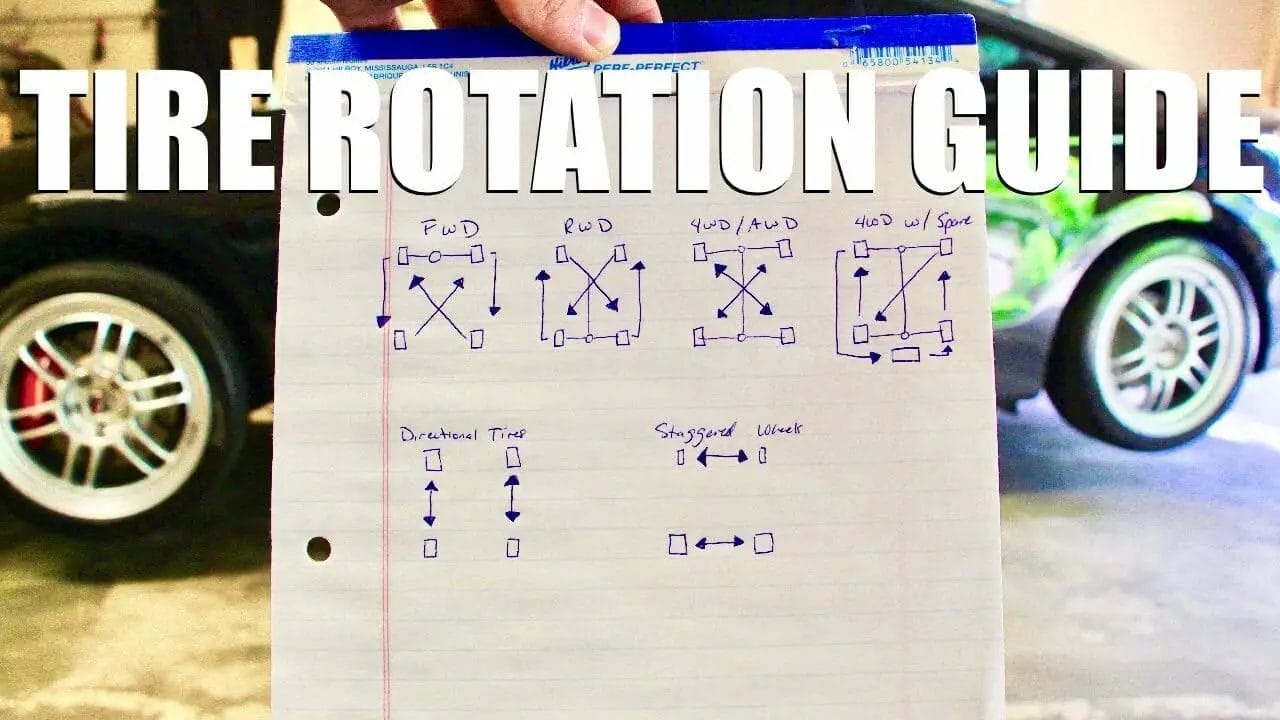
Therefore, it is recommended to change the tires periodically from the rear axle to the front axle and vice versa. Too often, this procedure is also not worth doing. Enough rotate every 8-10 thousand km.
If you regularly operate the car with a full load and at high speeds, then with such an aggressive mode of it is better to change shoes every 5-6 thousand km.
For motorists who drive 15-20 thousand km per year on average , the need to change the position of tires in the middle of summer or winter disappears. Just remember which tire was on the front and rear axles, and at the next seasonal change, install them with "offset" (swap the axles of their installation). nine0003
Just remember which tire was on the front and rear axles, and at the next seasonal change, install them with "offset" (swap the axles of their installation). nine0003
In order not to forget the position, sign the old position on the side of the wheel with a special wax marker. Some tires also have special fields for this marking.
If you notice that the tires begin to wear unevenly, the outer or inner side of the tread wears out faster, then is recommended to be replaced before . Also in parallel with this, you need to check the alignment.
1. Tread directionality. Many modern tires have a directional tread pattern. In order not to reduce the efficiency of the tire and not worsen the handling of the car, when rotating the wheels, it is recommended to carefully monitor the direction of the wheel rolling, which is marked on the sidewall of the tire with a special arrow.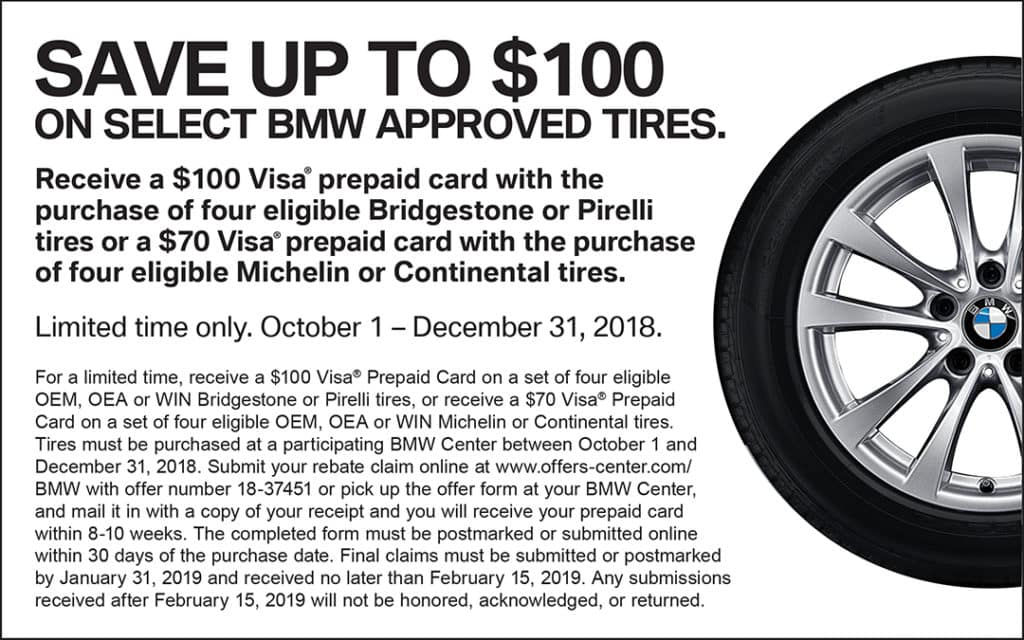
2. Balancing. When changing wheels, it is recommended to check their balance and, if necessary, change the value of the weights. Unbalanced wheels wear out faster and negatively affect the resource of steering elements. nine0003
3. Tire size. When changing tires along the axles, remember that on some machines the width and height of the profile of the front and rear wheels may differ.
Tires of various sizes are found on electric vehicles, compact city cars, and sports cars.
To change the tires along the axles, you can use the services of a tire fitting or a comprehensive car service. But in good weather, you can simply rearrange the wheels yourself, you just need to use a serviceable tool and perform all the operations correctly: install a jack, do not forget about the stops under the wheels, and so on. nine0003
There are several wheel rotation patterns.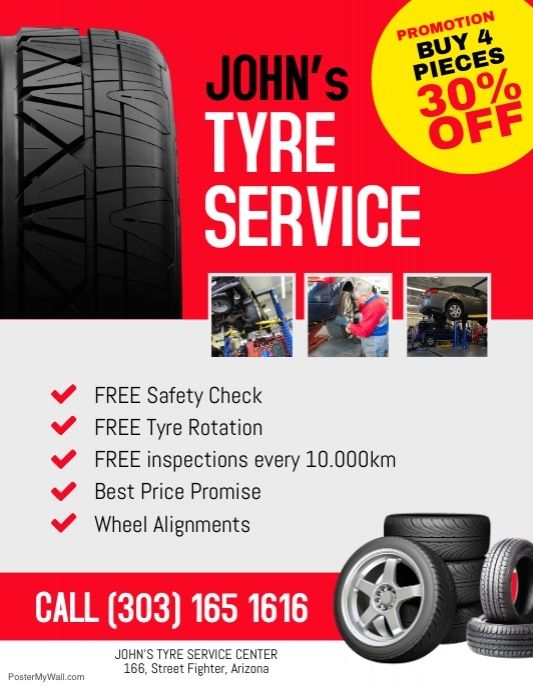 The most popular variant is the cross pattern , when the front left wheel becomes the rear right and vice versa, and the front right is installed from the left rear and also vice versa.
The most popular variant is the cross pattern , when the front left wheel becomes the rear right and vice versa, and the front right is installed from the left rear and also vice versa.
This circuit is universal, will fit vehicles with any type of drive .
On machines with rear and all wheel drive , it is recommended to use a scheme in which the rear wheels become front wheels diagonally , and the front ones are back, but without changing sides.
If your vehicle is equipped with tires with a directional tread pattern, then for them the only working scheme is interchanging front and rear wheels in places without changing sides .
Of course, it is recommended to swap tires of different sizes only within the same axle.
Also available with spare wheel included in the rotation scheme. As a rule, all options using five wheels are described in the vehicle manual. But remember that on most new cars, the role of a spare tire is performed by a narrow "reserve", on which both the maximum speed and mileage are significantly limited.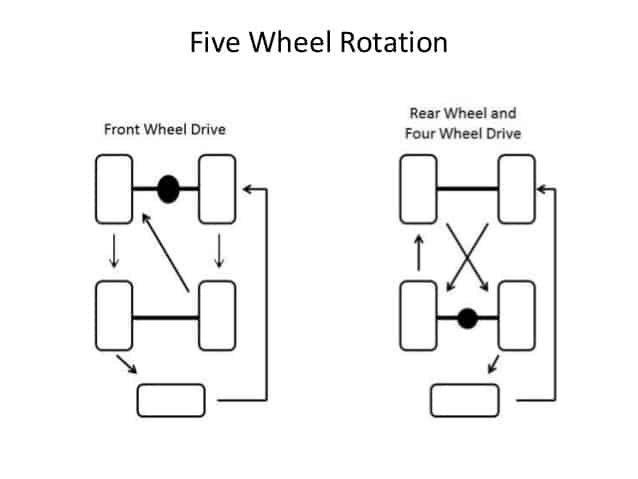 In addition, often a spare tire, even on a car from a car dealership, is installed of a different brand and model than those in which the four main wheels are shod. Because changing wheels, taking into account the "reserve" requires accuracy .
In addition, often a spare tire, even on a car from a car dealership, is installed of a different brand and model than those in which the four main wheels are shod. Because changing wheels, taking into account the "reserve" requires accuracy .
It is recommended to change truck tires every 40-45 thousand kilometers or in case of uneven or/and uneven tread wear. Rotation saves your changeover budget by wearing all tires evenly. This is especially important in cargo transportation, where the cost per kilometer (CPC) is taken into account.
UPC = (Tire Cost + Maintenance - Carcass Price) ÷ Mileage (km). nine0013
When planning, consider:
If we consider the load of the axles, then in the three-axle trailer the third axle experiences the greatest load , the second axle the smallest .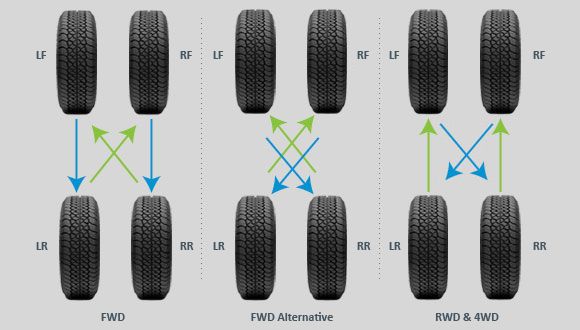 If universal cargo wheels are purchased, then they can be put on any axle, preferably , first to the steering position , and then rearrange the free-rolling axle to .
If universal cargo wheels are purchased, then they can be put on any axle, preferably , first to the steering position , and then rearrange the free-rolling axle to .
From time to time it is necessary to measure the tread depth of and swap the least with the most worn wheels of the same functional purpose.
Please note that twin wheels must also be changed if the residual depth difference is more than . If the difference in the diameters of the twin wheels has reached 6 mm , then the permutation must also be done immediately .
When rotating non-directional tires, it is recommended to reverse their direction of rotation, if this is allowed for their model.
Modern motorists are divided into two camps on the issue. The first believe that the collapse of the convergence after replacing the tires is mandatory. Others claim otherwise. Both camps are right here, but partially. nine0022
Others claim otherwise. Both camps are right here, but partially. nine0022
Contents
There are several nuances in the procedure.
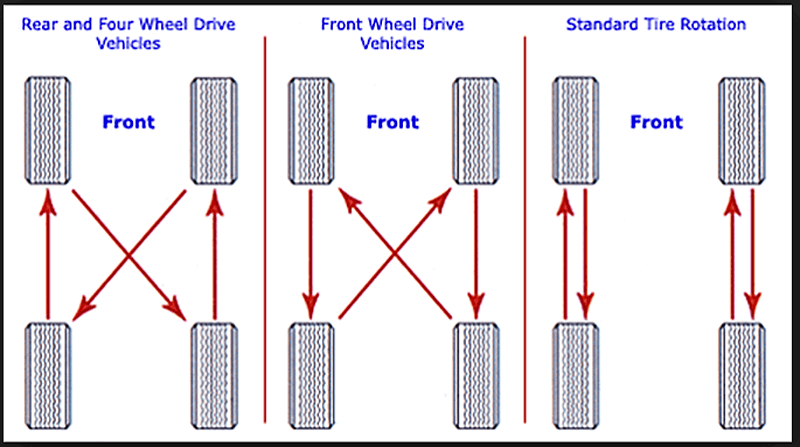
If tires on original rims are replaced with identical ones. Wheel alignment is not required. However, for the "calm of the soul" it does not hurt.
Note! It is recommended to use the services of masters with a good reputation. For a convincing result, you can study the reviews about the workshop and contact a specific person. If an error is made during maintenance, this will provoke increased wear of the slopes.
Is it necessary to camber when changing the size of the wheels - yes. Swapping narrow tires instead of wide tires and vice versa causes a violation of the geometry of the suspension, which subsequently causes the car to move to the side or eat up the slope. At the same time, the procedure is recommended even if it was recently done.
At the same time, the procedure is recommended even if it was recently done.
If there is no change in the parameters of the wheel, it is necessary to go to the collapse only as a scheduled inspection. How the wheel alignment looks in detail can be seen in the photo. nine0022
If, after changing tires, the car starts to behave inappropriately, this is a consequence of incorrect adjustment of the chassis elements of the car. Usually, the cause of the vehicle pulling to the side after replacing the ramps is one of these factors.

When you move the steering wheel to the right after changing tires, you need to check the primary causes.
